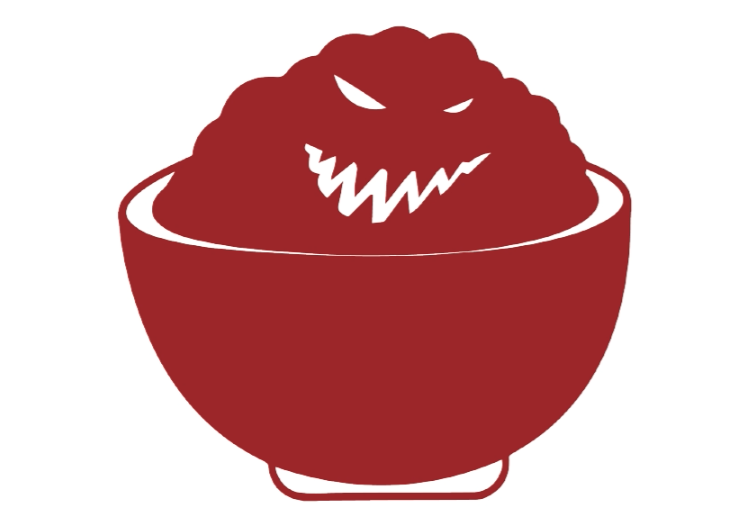Rice is one of several foods that incite this response for Mayer, along with pasta and applesauce. For most people, the seemingly innocuous foods pose no threat, but for Mayer, they incite a panic response. Although she knows logically that the foods don’t pose any risk to her, her brain is convinced that these foods will make her sick, preventing her from eating them or anything they’ve come in contact with.
“There’s not a real reason as to why those certain foods are a problem for me,” Mayer said. “It’s just that my brain has picked a few and they just really scare me.”
Until seventh grade, Mayer thought she was just an extremely picky eater. Around that time, she was diagnosed with Tourette’s syndrome. Because Tourette’s syndrome is often linked to OCD (obsessive-compulsive disorder), her doctors administered further tests, eventually diagnosing her with OCD. Following these diagnoses, pieces began to fall into place for Mayer.
“I could start to connect other things,” Mayer said. She realized that thinking certain foods were going to poison her wasn’t normal, but rather a facet of her OCD. Although Mayer’s food anxiety stems from OCD, feeding disorders are often the result of a combination of factors.
“There is some evidence that the more foods you’re exposed to when you’re young play a role, or even if you’re fed breast milk versus formula because formula tastes the same every time,” said Dr. Amy Drayton, the director of the Pediatric Feeding Disorders Department at the University of Nebraska Medical Center.
Since the flavor of breastmilk is determined by what the parent eats, children can be exposed to new flavors at a very young age.
There is also a strong genetic component, as some people are genetically predisposed to anxiety or neophobia, the fear of new things.
“Evolutionarily, our brains are poised to blame food for us not feeling well,” Drayton said. The adaptation, intended to quickly teach people not to eat things that make them sick, has backfired in a sense. An interesting example of this is conditioned taste aversion, in which someone eats something, especially something with a strong flavor, while sick and subsequently develops an aversion to that food.
In people already prone to anxiety, this can be exacerbated to the point that they will never return to that food, which can have a snowball effect. Although food-related anxiety cannot be easily attributed to one factor, nearly all feeding disorders are driven by anxiety in some way.
How that food-related anxiety presents itself can differ. In some cases, individuals are unable to eat certain foods without going through a certain ritual. These rituals, particularly in the case of OCD, often have to do with cleanliness. Mayer, for example, is unable to eat food that has been touched by someone else.
“It can be that if a food is not served in a certain way, or if it touches something it shouldn’t touch, or if it looks a certain way then a patient might think it’s going to cause some harm to them,” Drayton said. Many of her patients are hypersensitive to differences in their food.
“If there’s even a small discoloration in the food they might think it’s gross or infected or whatever their anxiety is, and then they won’t eat it,” Drayton said. “Some of them will never eat it again.”
Severe food anxiety can be isolating, as Mayer often faces limitations when eating outside of her home.
“Sometimes I’ll have friends who want to go out to eat,” Mayer said. “I usually just say I’m busy because I don’t want to make everyone work around my eating habits.”
When away from home, she struggles to find foods that she feels safe eating. She has several weeks at various summer camps relying on dry cereal and the occasional peanut butter sandwich to fuel her.
In addition to the social impact of food-related anxiety, feeding disorders can result in nutritional deficiency or unchecked weight loss, requiring professional intervention. Fortunately, Mayer has enough safe foods that she is still able to meet her nutritional needs, but this isn’t always the case. Even individuals with “safe” foods often continue to experience some anxiety when eating those foods.
“A lot of people who have food-related anxiety, not all of them, but some of them, have safe foods and they’re completely comfortable with those foods,” Drayton said. “But some of them even have anxiety about the foods that they do eat reasonably well and anxiety wears on you, it exhausts you.”
Two years after her diagnosis, Mayer met with an occupational therapist, who recommended exposure therapy, the primary treatment for food-related anxiety.
“I don’t think she understood me,” Mayer said. “Because she would say, ‘We’re going to put it in your mouth for two seconds and then take it out, and then the next time we’ll put it in for like 30 seconds and then take it out.’ I was telling her that the minute it touches me I think that it’s already contaminated me or that I’ve been exposed and she just didn’t know how to do anything, so I stopped seeing her.”
Although the method proved unsuccessful for Mayer, exposure therapy is an important tool for treatment specialists like Drayton.
Exposure therapy for food-related anxiety follows the same basic pattern: a hierarchy of fears building up to the anxiety being addressed, whether that’s trying new food, eating food after it’s touched another food, or eating from a utensil after someone else has touched it.
Depending on the age of patients, either their parents or the patients themselves help create that hierarchy. The top of the hierarchy is the highest level of anxiety they could imagine, eating mayonnaise, for example. The bottom would be foods that feel safe, or comfortable. From there, it’s all about finding a starting point between those two things. That starting point might be eating a relatively low-anxiety food, a low step of interaction with a fear food, like smelling or touching it.
“You fill in the hierarchy from there,” Drayton said. Another important aspect of exposure therapy is preventing ritualistic behaviors that patients might engage in to assuage their anxieties.
“For OCD especially, if there’s a ritual that the person engages in after eating something that gives them anxiety that helps bring their anxiety down, you try to prevent that from happening so that the anxiety can extinguish naturally,” Drayton said.
In her experience in the Pediatric Feeding Disorders Department, Drayton has worked with countless kids across the spectrum of feeding disorders. Families come from across the country, and even the world, to the center, which is one of just three of its kind in the United States.
“We kind of get them at the end of the road, where they’ve tried everything else,” Drayton said. And there’s a reason the center’s waitlist is over a year long. The clinic’s unique interdisciplinary approach allows the clinicians to analyze the problem from different angles, allowing their team to catch things that others might miss. They also have an intensive treatment option, where they see patients for five meals a day five days a week for up to eight weeks.
Their goal is to help their patients reach a point where their aversions no longer significantly impact them physically or socially.
“We don’t aspire to make kids foodies,” Drayton said. “We want them to be able to eat a nutritious diet, get enough calories, eat quickly enough without needing to inspect it or pick it apart, but we just want them to eat what their parents or their friends eat. It doesn’t need to go beyond that.”
To that end, Drayton has found exposure therapy to be extremely successful in treating food-related anxiety.
“It’s worked for every kid,” Drayton said.
Drayton and her team also equip their patients and their parents with tools to continue to address their food aversions. This allows them to explore new foods in the future without necessarily having to return to the clinic.
“Say they start to date, and they want to be able to eat some foods that their significant other is cooking,” Drayton said. “They can go ahead and try to address that themselves, or come back in for more treatment.”
Drayton believes that with the proper care, food anxiety doesn’t have to be debilitating and that everyone should be able to feel comfortable eating.










